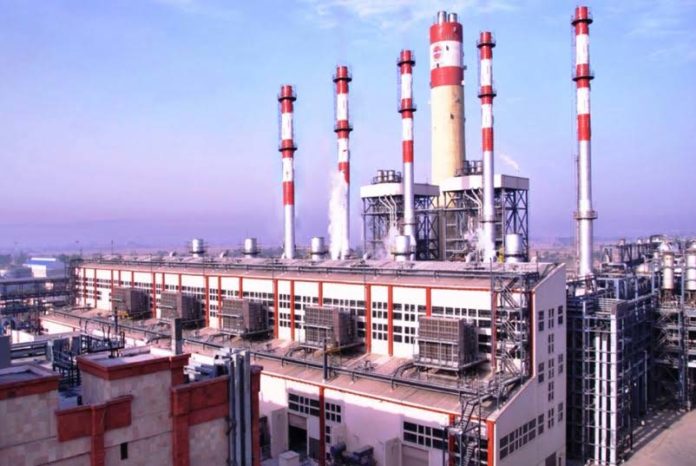ISLAMABAD: On Wednesday, the cabinet’s Economic Coordination Committee (ECC) approved a raft of changes in the power sector, which did not make for the biggest headlines, but the moves are significant not only for a large group of people, including, at the end of the day, potentially for the consumer, but in terms of the future plans to sell two of the three major power plants.
The changes included approving a recommendation by the power division to set the minimum take or pay commitment at 33% for three RLNG power plants — the Quaid e Azam thermal power plant, Baloki power plant, and Heveli Bahadur Shah power plant — which previously stood at 66% in the Power Purchase Agreement (PPA).
The development also came along with adjustments to the Gas Supply Agreement (GSA) on two fronts. Firstly the revision of the take or pay commitment to a more acceptable level of 33% and secondly the Gas Supply Deposit (GSD) which was previously valued at 25% of the maximum gas supply to the plant would be adjusted to a fixed Rs15 billion for each plant instead.
This is significant for a few reasons – but first, one must understand what all the jargon means.
In plain words…
According to the terms and conditions of a gas supply contract, GSD is a refundable sum that the supplier will repay to the customer upon disconnecting the gas supply. A safety net for the supplier of sorts – which is important given the phenomenon of unpaid dues in Pakistan’s power sector.
As for “take-or-pay”, the provision is an agreement between contracting parties that a certain amount of supply will be paid for if it is used or not. As the term suggests, you either take it or pay for it.
A GSA governs the sale and purchase of natural gas for supply to a facility like a factory or a power plant. The GSA lays out the framework for the selling of gas to the power plant.
A PPA is the agreement that governs the terms and conditions of purchasing of power from a power plant.
What has happened
The ECC has fixed the minimum take-or-pay commitment to 33% of the contract in both the GSA and PPA.
In terms of the PPA, this means the purchaser of the power from these plants, in this case the Central Power Purchase Agency (CPPA), will either “take” the power produced or “pay” for 33% of the agreed quantum even if it is not required.
In terms of the GSA, the “take or pay” has also been set at 33%, which means the three power plants in question will now have to pay 33% of the allocated supplies even if it does not require that amount of gas to produce electricity.
Take-or-pay provisions guarantee the producers and suppliers a predetermined amount of money in exchange for making the supplies available as per agreements. The take-or-pay commitment amounts have been reduced from 66% to 33%, which means there is a reduced fixed liability to pay.
It has come in for widespread criticism, but take-or-pay clauses are quite widespread in the energy industry. This is due to the high overhead expenses for suppliers of energy units such as natural gas or crude oil, due to the volatility of energy prices.
Take-or-pay contracts incentivize energy suppliers to invest capital up advance since they have some guarantee that their products will be sold. This provision is essential for obtaining project funding since it offers an element of consistency in the project cash flows.
Furthermore, instead of an annual production plan for binding purchase of power – i.e. fixing how much power would have to be bought from a supplier or plant for a year – there now is monthly production planning or commitments with effect from 2022. This would also mean annual allocations of gas to meet the production, which will now instead be done on a monthly basis.
Basically, with the new development, energy production plans will be revised and adjusted on a monthly basis.
Why is this key now?
A proposal to waive the minimum 66% take or pay commitment in the PPA and GSA of the three government owned power plants was approved by the ECC in its decision from April last year.
The earlier changes to GSAs and PPAs were not put into effect due to legal complications. The privatisation and sale of these power stations was subsequently delayed.
The government has now realised that the earlier decision needs to be reviewed in light of the spike in liquified natural gas (LNG) prices in order to best utilise the chilled fuel for the continuous running of these power plants and ensure their operational security for a buyer of the plants (the government wants to sell them to raise capital).
In order to raise more than $2 billion urgently required to sustain the rapidly declining foreign exchange reserves, the administration has been in talks with friendly governments in the Middle East for the sale of at least two of the three stated LNG-based power projects on a government-to-government basis.
Whether or not reducing the take or pay clauses in the agreement would prove to be fruitful in attracting foreign buyers for the power plant is a question that needs to be answered, experts believe, given how take-or-pay clauses have the potential to benefit all parties involved.
According to some experts, the planning of power production on a monthly basis might do more harm than good.
Is it a big deal?
As far as some experts are concerned this is not a major development. The plants mentioned are considered to be the most efficient in terms of power production, and therefore are classified as must-run power plants. That is, power coming from these plants have to supply energy to the grid under all conditions.
However, considering the spike in LNG prices, reducing the take-or-pay percentage would help in reducing the overall cost for the government. Additionally, considering the volatility in the energy markets, reducing the take-or-pay agreement would contribute to reducing the overall circular debt that has ballooned to about Rs 1.6 trillion.
Dealing with this circular debt is a key commitment to the IMF, and was again specifically mentioned by Finance Minister Ishaq Dar on Wednesday when was speaking about steps to be taken to reduce differences with the multilateral lender of last resort.
Contractually speaking, take-or-pay agreements can provide benefits and security on both sides of the fence, for the supplier and purchases. This goes for the entire value chain that goes into providing energy for your home.
A higher take-or-pay percentage suits a supplier who knows they will receive at least a set amount of money for a commodity, hence the risk in investing capital to produce it is decreased. A lower take-or-pay ratio usually suits a commodity buyer since they are free to shop around for a better price.

























Another Successful Bitcoin Recovery!!!
My husband and I are another successful client of Cyber Genie Intercontinental among many. I read countless positive reviews about how they have been using their cyber expertise to help people achieve their happiness back by recovering their scammed or lost Bitcoin and assets from fraudulent and posers of Cryptocurrencies trading companies. After reading many of the wonderful services they render, I had to contact them because my husband was seriously defrauded by some Chinese bitcoin miners, it all ended in goodwill as we were able to recover what we thought we had lost to scammers. Contact them on [ Cybergenie AT cyberservices DOT com ] WHATSAPP [ +1 ] 2.5.2-5,1,2-0.3,9.1 ] and help yourself from depression.